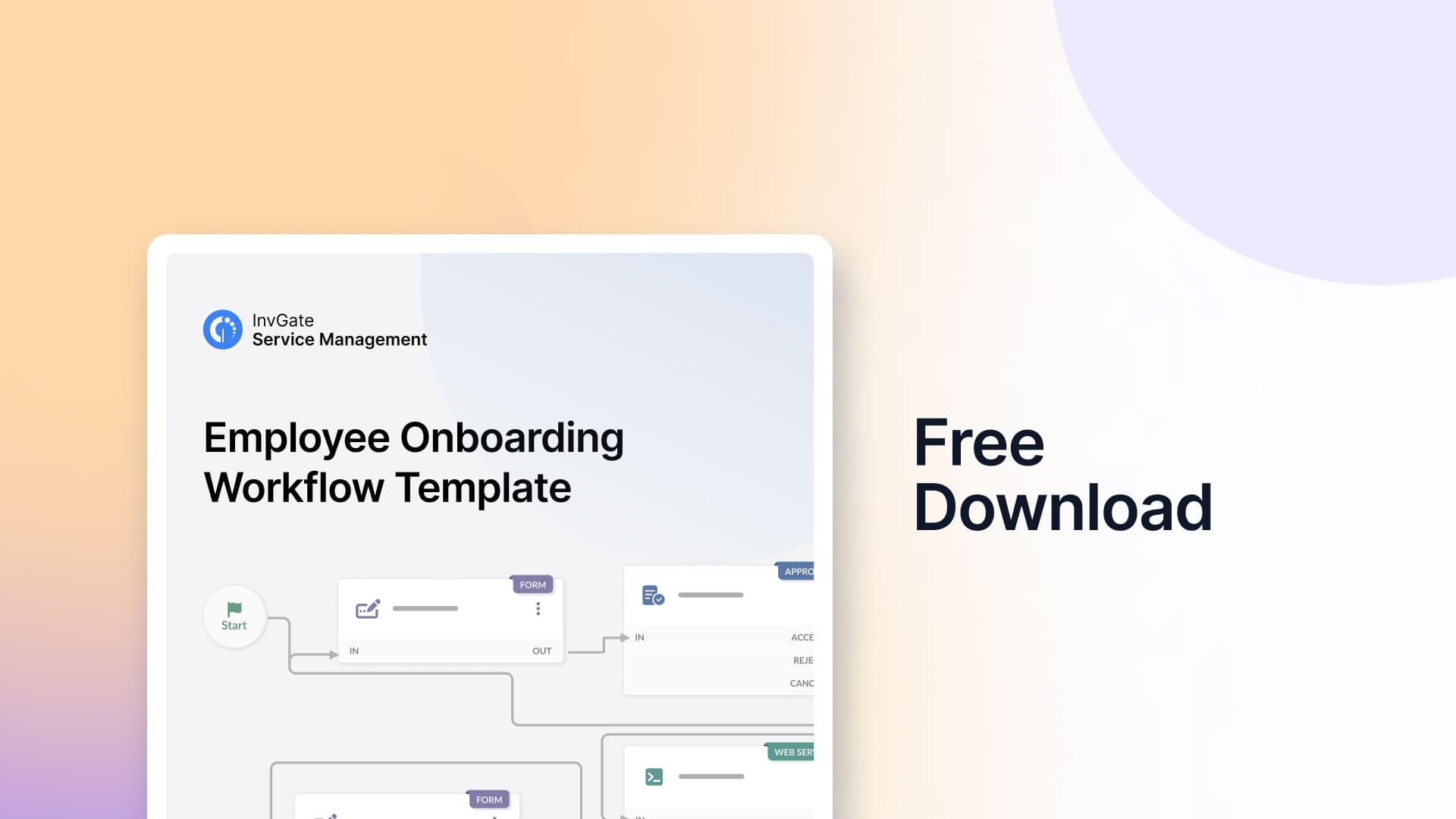HR teams handle vast amounts of information daily—policies, employee records, training materials, compliance documents, and more. Organizing all this data can become a challenge, especially as companies grow. That’s where HR Knowledge Management (KM) steps in.
With a structured way to collect, store, and share HR knowledge, a solid KM system helps streamline operations, improve decision-making, and boost employee satisfaction.
In this article, we’ll explore the benefits of HR knowledge management, best practices for implementation, and the challenges you might face. We’ll also take a closer look at how KM supports internal communications, onboarding, and compliance, along with practical use cases to show how it can transform the way HR operates.

What is HR knowledge management?
HR knowledge management refers to the systematic process of capturing, organizing, and sharing human resources-related information within an organization. This can include everything from policies and procedures to employee records, compliance documentation, and training materials. It's a specialized branch of knowledge management (KM) that focuses on the unique needs of HR teams, ensuring they have quick and reliable access to the data required for their operations.
For HR departments, managing knowledge efficiently is essential to handle daily tasks, support strategic decision-making, and improve communication with employees. It’s about storing documents and making them accessible and useful. A well-structured HR knowledge management system can facilitate employee onboarding, help manage internal processes, and keep the entire organization aligned with legal requirements and company policies.
Why HR Knowledge Management is important for modern workplaces
In modern workplaces, HR handles an immense volume of information. Without a reliable way to manage this information, HR teams risk creating bottlenecks in processes like hiring, compliance, and employee support. Effective HR knowledge management helps organize and make this information available when needed, minimizing confusion and inefficiencies.
For instance, when new employees join the company, they often have questions about benefits, policies, and procedures. An easily accessible knowledge base can reduce the burden on HR staff by allowing employees to find the answers themselves. Similarly, compliance with labor laws and internal policies requires that HR documents be both accurate and up-to-date. An effective system ensures all team members, no matter their role, can find relevant, up-to-date information without delays.
Beyond daily tasks, HR knowledge management improves long-term decision-making. When policies, performance data, and employee records are well-organized, HR professionals can draw on historical insights to plan for workforce changes, training programs, and process improvements.

Key components of an HR knowledge management system
An effective HR knowledge management system consists of several key components designed to streamline how information is stored and accessed. These systems are typically cloud-based, allowing for easy access across teams while maintaining strict security measures for sensitive employee data.
- Centralized knowledge base: A well-structured repository that stores all HR documents—policies, procedures, and guides—in one place. This helps HR teams maintain consistency in communication and reduce the time spent looking for specific documents. For example, a centralized platform could house everything from employee handbooks to guides on how to submit benefits claims.
- Document management: A robust document management system allows HR to store and organize sensitive documents securely. This includes employee contracts, performance evaluations, and compliance records. Tools that support version control are especially valuable in ensuring that outdated policies don’t circulate, which could lead to compliance issues.
- Knowledge-sharing platforms: These tools enable HR teams to collaborate on projects and share information effectively with other departments. In some organizations, knowledge-sharing platforms are integrated with training and development systems, allowing employees to access learning materials and participate in discussions that improve their skills and understanding of company policies.
- Automation and AI integration: Modern HR systems often incorporate automation features to categorize documents and even provide suggestions on frequently asked questions, further reducing the workload for HR staff. For example, AI can assist in sorting documents based on keywords, making it easier to retrieve specific data when needed.

Key use cases of HR Knowledge Management
HR knowledge management plays a vital role in multiple areas beyond internal communications. By providing structured access to important information, it supports onboarding, compliance, performance management, and more, ensuring smoother workflows and better employee experiences.
Onboarding
Onboarding is often an overwhelming process for new hires, who are expected to absorb a large amount of information quickly. With an HR knowledge management system, organizations can streamline the onboarding process by providing new employees with access to necessary documents, policies, training materials, and company culture guidelines in one central location. This helps new hires get up to speed faster and reduces their dependence on HR for basic queries.

Compliance
Keeping track of compliance (legal and regulatory requirements) is an essential task for HR. A centralized knowledge base allows HR teams to store and manage all compliance-related documents, ensuring that employees and managers have easy access to the latest policies and regulations. When changes occur, the system can automatically notify the necessary parties, minimizing the risk of non-compliance. This is especially critical in industries where regulations frequently change, such as healthcare or finance.
Performance management
Performance management is another key area supported by HR knowledge management. By consolidating performance data, employee reviews, and feedback in a central repository, HR teams can provide managers with easy access to historical performance records. This ensures that performance reviews are thorough and data-driven. For example, a manager preparing for an employee’s annual review can quickly pull up past evaluations, enabling more accurate feedback and better-informed decisions regarding promotions or training needs.
Policy updates and internal announcements
A knowledge management system simplifies the dissemination of policy updates and internal announcements. Rather than relying on emails, which can be easily missed or overlooked, a central knowledge base ensures that all employees have access to the latest company-wide updates. This is particularly important during times of rapid change, such as policy shifts due to new regulations or organizational restructuring.
Employee self-service
HR knowledge management empowers employees to handle many of their own HR-related tasks, reducing the workload on HR teams. For instance, employees can access information about benefits, vacation policies, or training schedules directly from the knowledge base. This self-service functionality allows employees to find what they need without constantly reaching out to HR, streamlining communication and reducing bottlenecks.
Knowledge sharing and collaboration
HR knowledge management systems foster knowledge sharing and collaboration across departments by providing a centralized platform for employees to contribute and access information. Whether it’s HR professionals sharing best practices, managers uploading resources for their teams, or employees contributing insights, a shared knowledge base encourages a culture of collaboration. For instance, HR teams can develop collaborative spaces for sharing internal processes, templates, and guides, which streamlines communication between different teams and ensures consistency across the organization.
Training and development
Training and development are key areas where knowledge management systems deliver value. By organizing and storing training materials in a structured, easily accessible way, HR can ensure that employees have on-demand access to learning resources. Whether it’s mandatory compliance training or optional skill development courses, employees can find everything they need in one place.
HR can also track progress and update training content as needed, making it easier to maintain a continuous learning environment. For example, an employee looking to upskill can access relevant modules directly from the knowledge base, reducing the need for HR to manually provide materials.

Benefits of HR Knowledge Management for Employees and HR Teams
Implementing HR knowledge management brings several tangible benefits to both HR teams and employees:
- Faster onboarding: New hires gain quick access to training materials, policies, and other resources, speeding up the process of becoming familiar with company operations.
- Improved compliance: Centralized storage of policies and procedures makes it easier to follow legal requirements and internal standards, reducing the risk of non-compliance.
- Increased employee satisfaction: Employees can find answers to common questions themselves, without relying on HR staff, leading to a smoother experience and less frustration.
- Better decision-making: HR professionals benefit from well-organized historical data, which allows them to make more informed decisions regarding hiring, workforce planning, and internal processes.
Best Practices for Implementing HR Knowledge Management
Successful implementation of HR knowledge management requires careful planning and a few essential practices:
- Organize information based on employee lifecycle: Segment data and documents according to stages such as hiring, performance management, and offboarding. This structure helps employees and HR teams easily find relevant information based on their current needs.
- Ensure accessibility: Cloud-based systems offer convenient access to knowledge across teams and locations. Employees and HR staff should be able to access the knowledge base from any device to minimize delays.
- Regular updates and maintenance: Outdated or inaccurate information can cause confusion. Make it a priority to review and update the knowledge base regularly to keep it relevant.
- Train HR staff on KM tools: The best system is only useful if the HR team knows how to use it effectively. Proper training on the system’s features ensures that knowledge management tools are used to their fullest potential.

Challenges of HR Knowledge Management and How to Overcome Them
Despite its benefits, HR knowledge management can face certain obstacles. Addressing these challenges early on is key to success:
- Resistance to change: Some employees may be hesitant to adopt new systems. Introducing the KM system gradually and highlighting its advantages can help overcome resistance. Providing training and ongoing support also aids in the transition.
- Information overload: An overly complex knowledge base can make it harder to find the right information. Organize content logically and focus on the quality of information, avoiding the temptation to overload the system with unnecessary documents.
- Security concerns: HR deals with sensitive data such as employee records and compliance documents. Using secure platforms and setting appropriate access controls ensures that only authorized personnel can view or edit sensitive information.
Improving HR Efficiency Through Knowledge Management Automation
Automation is becoming an integral part of HR operations, and knowledge management systems can be used to improve efficiency. HR teams can focus on more strategic activities with automated tasks, such as document updates, compliance notifications, and employee self-service processes. For example, automated workflows can remind employees of upcoming training deadlines or policy changes, ensuring compliance without manual oversight from HR staff.
Additionally, automation can assist with tracking knowledge usage, providing valuable insights into which documents or policies are accessed most frequently. This data helps HR refine the knowledge base over time, ensuring that the most relevant information is always accessible.

Conclusion
HR knowledge management is a critical component of a well-organized and efficient HR department. Streamlining access to information enhances onboarding, improves compliance, and leads to more informed decision-making.
Overcoming common challenges like resistance to change and security concerns is essential, but the long-term benefits for both employees and HR teams are clear. Investing in an organized, accessible, and secure knowledge management system is a step toward building more agile and effective HR processes.















